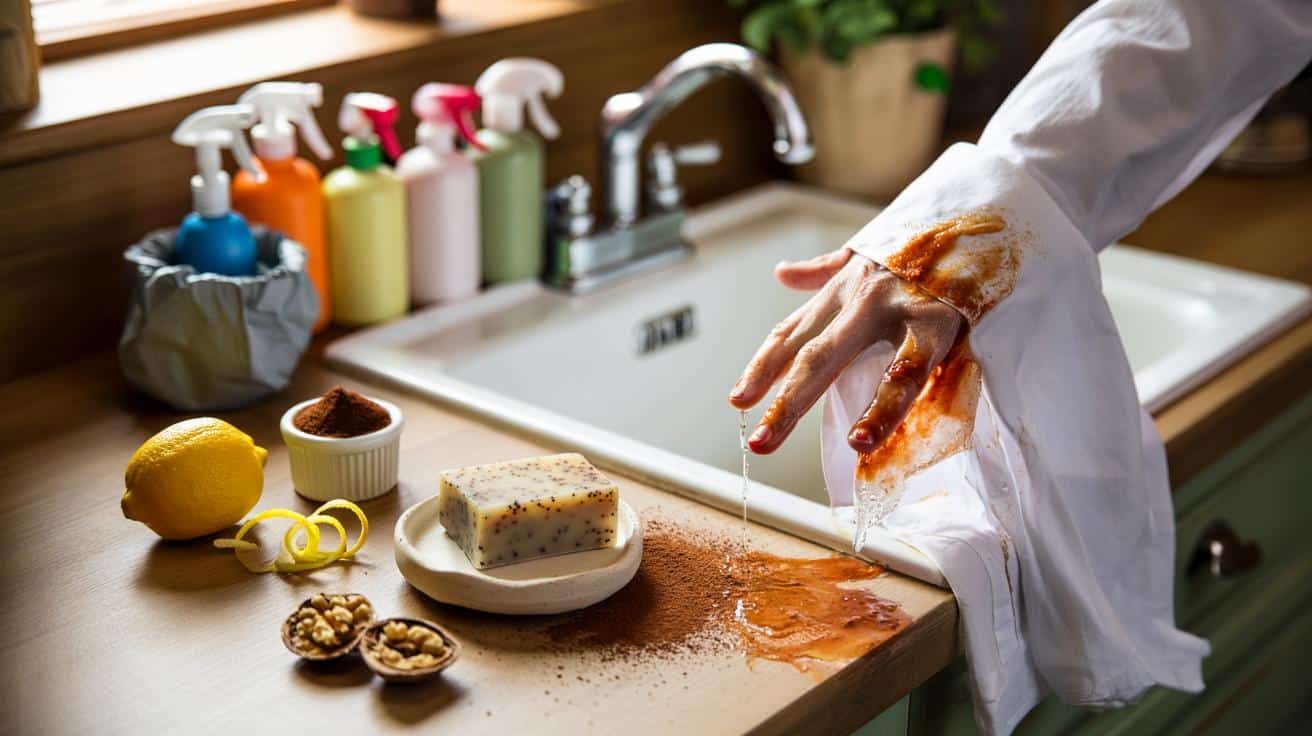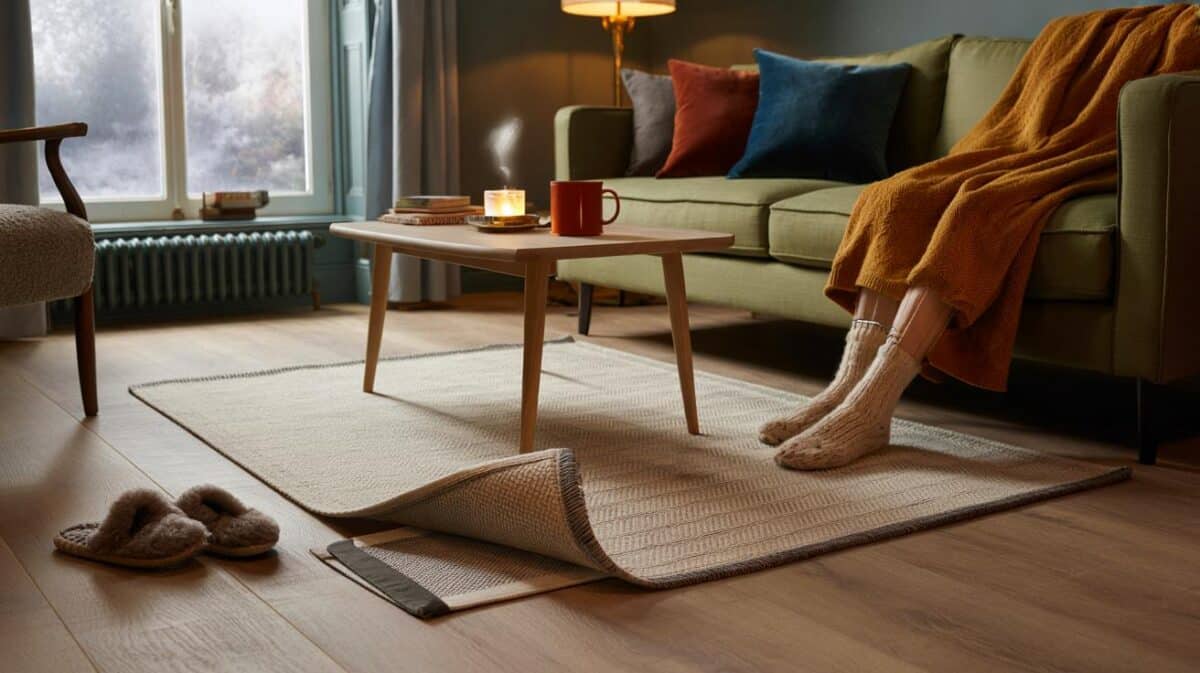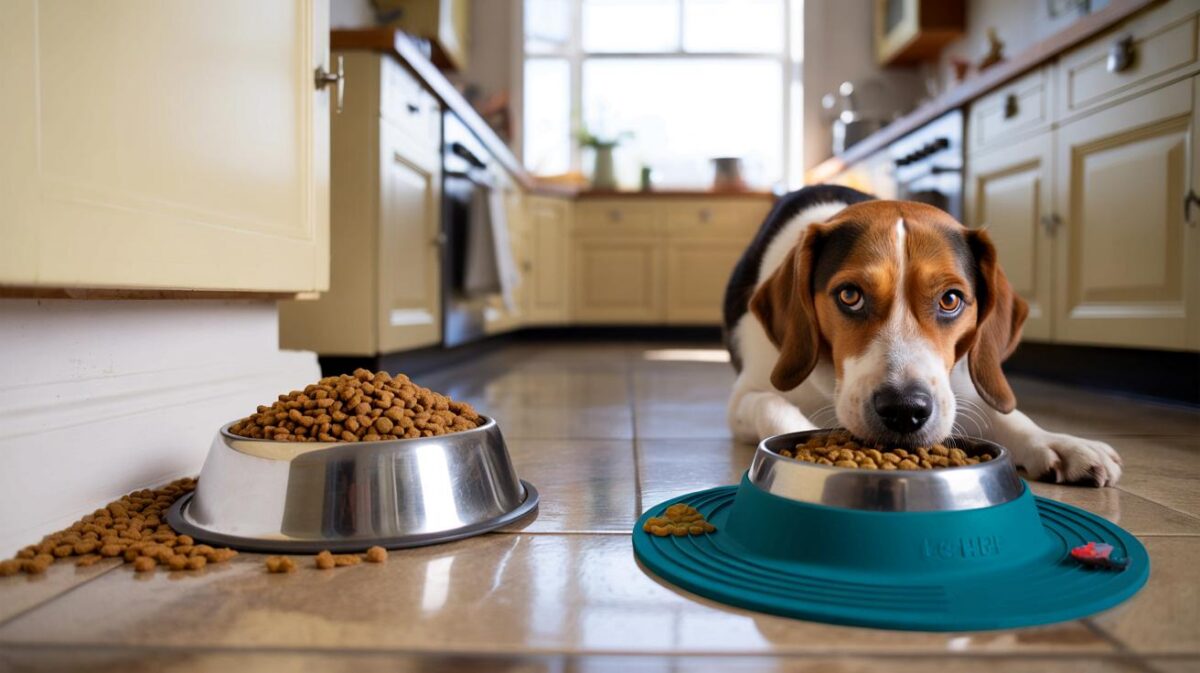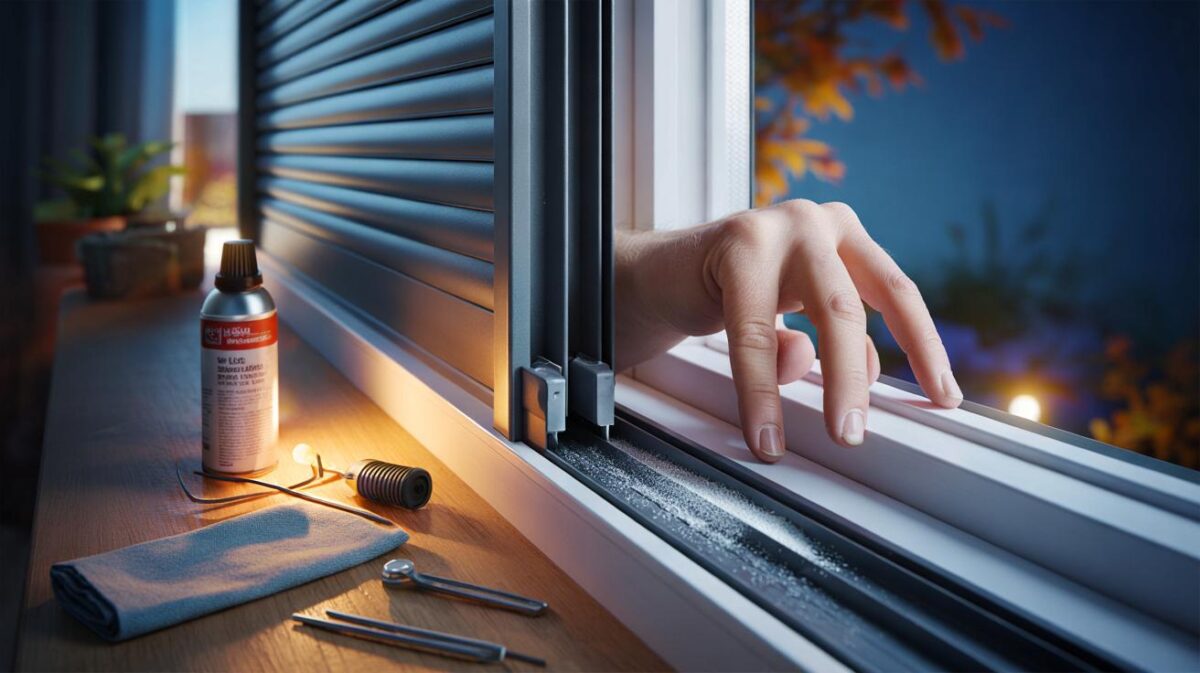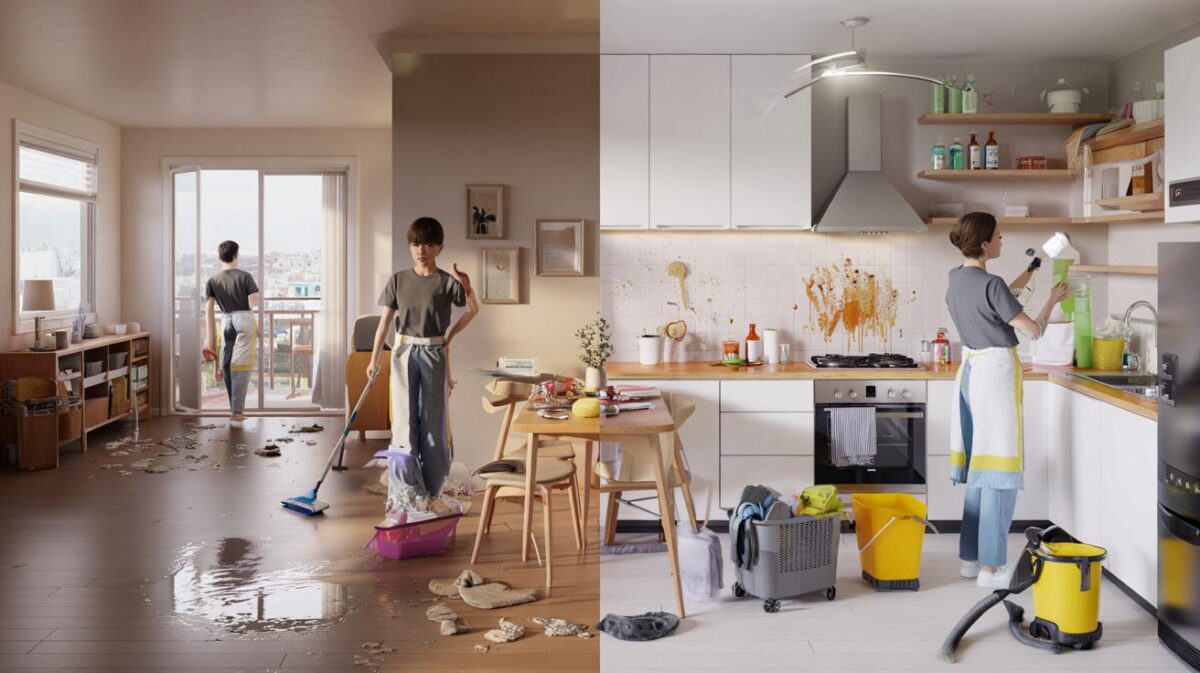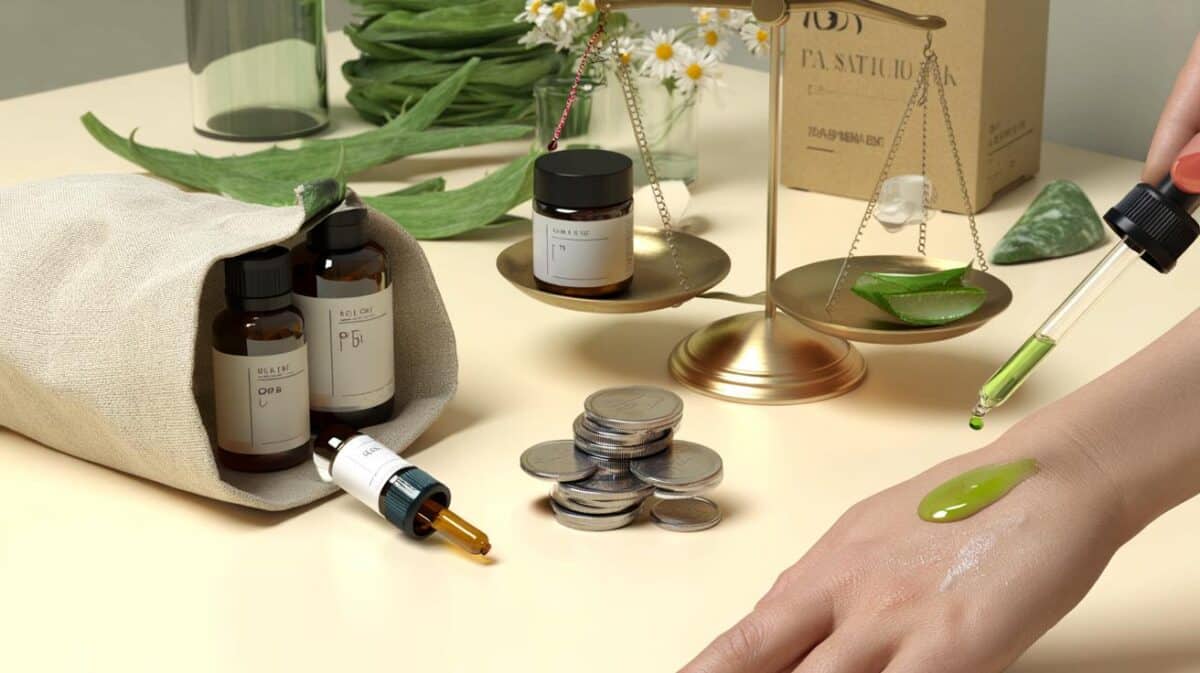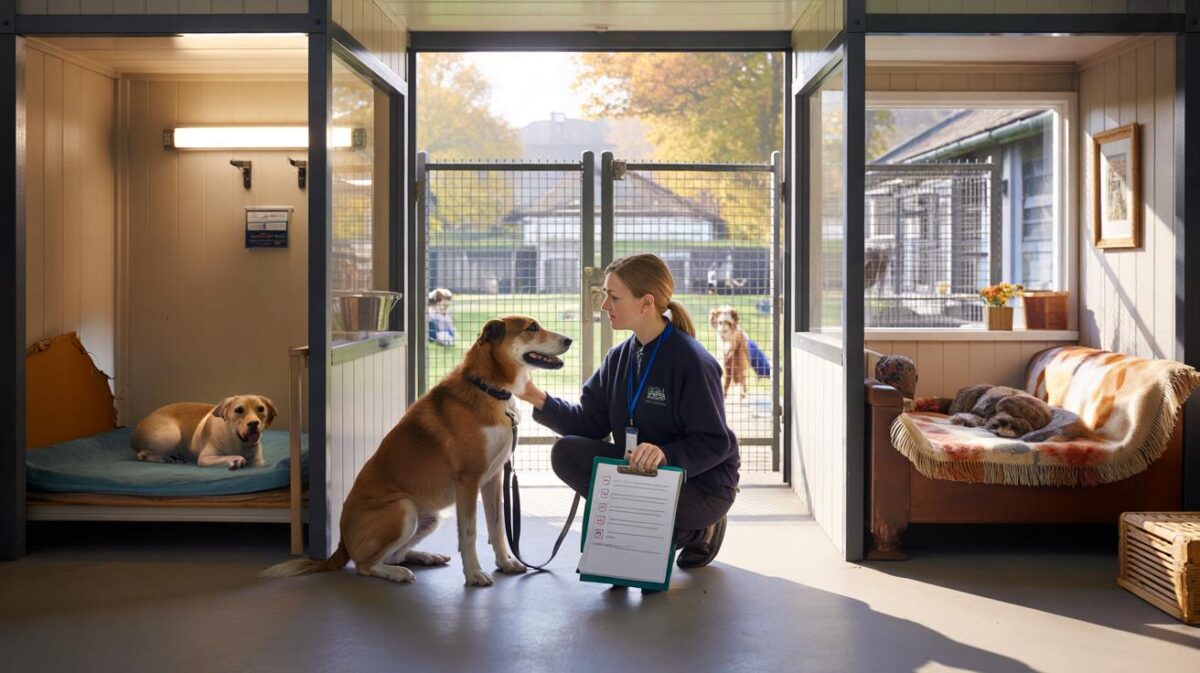A growing number of households are swapping trigger sprays for a gritty, kitchen-born bar that promises cleaner cuffs and lighter bins. The method sounds disarmingly simple: take a plain soap, add finely ground food scraps, and scrub. But behind the thrift sits a sharper story about costs, plastic, and what really shifts the stains that autumn brings.
Britain’s stain problem meets a frugal twist
Carrots, beetroot, grass, soil and tomato sauce still mark hands and fabrics long after rinsing. Supermarket removers talk tough on labels, yet stubborn pigments and kitchen odours often cling on. Scented blends can mask, not fix. Trigger bottles stack up. Bills rise.
Into that frustration steps a low-tech fix that slips neatly into a British routine: a hand-sized bar, mixed in the kitchen, that relies on age-old abrasives. Coffee grounds, dried citrus zest and crushed nutshells act like a gentle scourer. A plain soap base lifts the residue set free by the scrub. Skin stays calmer than with harsh gels. The bin stays lighter than with plastic-heavy kits.
Three scraps, one bar, 60 seconds: a kitchen-grade mix that tackles stains and trims plastic without shrinking your wallet.
From compost to sink: how the method works
Natural grit does the heavy lifting. Coffee grounds give a fine, even abrasion that breaks up soil and grease. Dried lemon or orange zest brings a fresh scent and natural oils that cut through odours. Crushed skins of walnuts or hazelnuts supply a coarser bite that nudges clingy pigments from fibres and knuckles. The soap base binds and carries the loosened muck away in the rinse. You tailor the blend to the mess in front of you.
What you need and why it beats the bottle aisle
- 100 g of a plain, solid bar (traditional olive or laurel types work well)
- 2 tbsp dried coffee grounds
- 2 tbsp finely crushed nutshells or almond skins
- Zest from one lemon or orange, fully dried and crumbled
- 1 tbsp mild vegetable oil for slip and skin comfort
- 2 tbsp water to bind, adjusted for texture
Grate the soap, combine with the dry abrasives and oil, then warm gently in a bowl over hot water until it forms a paste. Press into a small mould — a yoghurt pot or biscuit tin does the job — and let it set. The result travels well, stores for months, and shrugs off most kitchen and garden grime.
Cost, waste and time: the quick maths
| Item | Typical cost per unit | Plastic per unit | Uses per unit |
|---|---|---|---|
| DIY scrub bar (100 g) | ~£1.10 (using a £1 soap + scraps) | None | 40–60 hand cleans or pre-treats |
| Trigger stain remover (500 ml) | £3–£4 | 1 bottle + spray head | 20–30 pre-treats |
Households report fewer bottles under the sink and better control over thickness and scent — because they set both.
A step-by-step recipe tested in a busy weeknight kitchen
- Dry your zest and nutshells fully. Damp grit clumps and spoils.
- Grate the bar into flakes for even melting.
- Mix the flakes with coffee, crushed shells and zest in a heatproof bowl.
- Add the oil and a splash of water. Stir over a bain-marie until a thick paste forms.
- Pack into a small container. Press firmly to remove air pockets.
- Cool for several hours. Unmould and air-dry for a day before first use.
To use on hands, wet the bar and rub palms and nails for 20–30 seconds, then rinse. For fabrics, wet the patch, glide the bar over the stain, massage gently and rinse or launder as usual.
Pairings for real-life messes
- Garden grime and green stains: coffee grounds with crushed walnut shells lift soil and chlorophyll from fingers and cuffs.
- Fish and garlic odours: citrus zest with coffee breaks the smell and cuts surface grease on chopping-board splashes.
- Paint and clay from crafts: citrus zest plus a pinch of poppy seeds adds extra bite without harsh solvents.
Safety, fabrics and where it shines — or doesn’t
Always test on a hidden seam before treating clothes with bold dyes, silk or delicate finishes. Abrasive particles can fuzz soft fibres if you scrub too hard. For wool, switch to a lighter blend with fewer shells and a shorter rub. For leather, avoid abrasives entirely.
If anyone in your home has a nut allergy, skip nutshells and use dried salt crystals or fine pumice instead, ground very small to avoid scratching. Keep zest minimal if you react to citrus. Children can help make the bar, but an adult should handle the hot bowl and the grating.
Hands, nails and tools
Mechanics, gardeners and cooks will see the biggest gains at the sink. Work the bar under nails to remove compacted soil. Follow with a dab of mild hand cream if your skin runs dry in winter. For stained chopping boards, use the bar, scrub with a dedicated brush, then rinse well.
Why now: prices, bins and a small win for the climate
Household budgets face pressure. Cleaning aisles have grown pricier. A home-made bar uses what you already have and sidesteps plastic. When you fold coffee grounds and peel into a bar, you extend the life of clothes by pre-treating splashes before they set. That delay in replacement keeps pounds in your pocket and textiles out of the bin.
Packaging matters. Trigger sprays mix a bottle, a label and a complex head that often ends up as residual waste. A compact bar arrives bare. Store it on a dry soap dish and it will last weeks. That longevity reduces repeat purchases and the trips that go with them.
What to watch for in the supermarket aisle
- Read the label for microplastics or hard polymer beads. Natural grit is biodegradable; plastic grit is not.
- Short ingredient lists are easier on skin. Fragrance-heavy blends can irritate and only hide odours.
- Solid formats cut water transport. Concentrates or bars give more cleans per gram.
You control the grit, the scent and the price. Adjust the mix to the mess and keep the bottle count down.
Further ideas and practical checks
Keep a travel tin in the car or changing bag. Mud on school trainers lifts faster if you rub and rinse the mark within minutes. For uniforms, stroke the bar along collars and cuffs before a 30°C wash; you may be able to drop the temperature and still get crisp results. If your tap water is very hard, add a pinch of washing soda to the laundry stage, not the bar, to protect the skin-friendly balance you built into the mix.
For winter batches, dry peel on a radiator rack, not in the oven, to save energy. If you track costs, jot down uses from a single 100 g bar over a month. Most households find the spend per pre-treat settles below 3p while plastic drops to near zero. That small, steady shift — multiplied across sinks and seasons — adds up to cleaner hands, cleaner shirts and fewer bottles in the bin.
